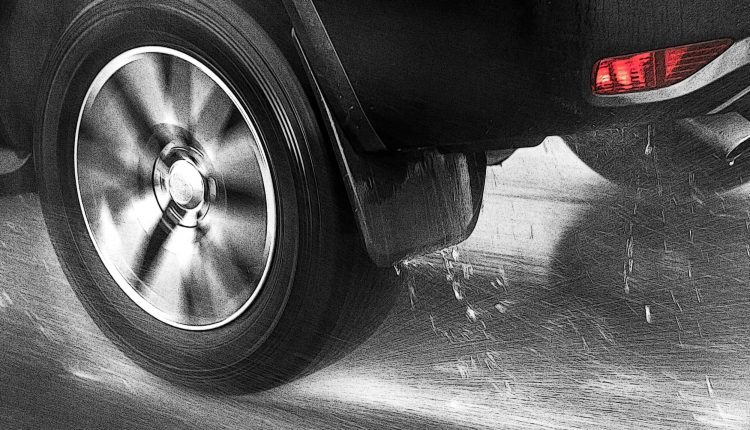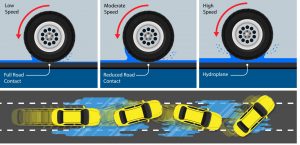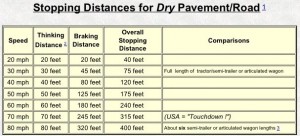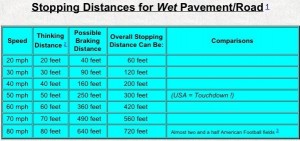Driving in Rain: Hydroplaning – The Hidden Danger
Rain is always a blessing specially if it downpours in hot summer day. It brings smiles and happiness. Pakistan being in tropical region is hit by monsoon weather every year. On one hand if rain brings relief, it also brings dangerous conditions for commuters. One hidden danger is “HYDROPLANING”.
All of us who have driven have experienced this phenomena when we drive in rain. The term hydroplaning is commonly used to refer to the skidding or sliding of a car’s tires across a wet surface. Hydroplaning occurs when a tire encounters more water than it can scatter. This seems impossible for a such a heavy car to slide on few inches of water but the reality is that this happens and caused many fatalities. Hydroplaning can occur on any wet road surface, however, the first 10 minutes of a light rain can be the most dangerous.
Phenomena:
When you drive through standing water, your tires have to push the water out of the way, to maintain contact with the road surface. The tread of the tire gives a path for the water to be channeled away from the contact area of the tire. If your speed increases to the point ( At higher speeds (50 mph and higher), where the water cannot be pushed out of the way quickly enough, the tire starts to ride up on top of the water. A thin layer of water stands between your tires and the road surface, and you lose control of the vehicle. When you are hydroplaning, you have no control of the car’s direction. The tire can steer left or right, but it is not in contact with the road, so it has no effect on the travel of the car. If you hit your brakes while hydroplaning, it actually increases the hydroplaning, since a stationary tire acts more like a water ski than one that is turning. Winds, Uneven road increases the chances for Hydroplaning.
Video Credit: National Highways & Motorway Police-NHMP
What to Remember:
In some places, rainfall occurs so rarely that when the road does get wet, water mixes with the oil and grease that have seeped into the pavement, making the road extremely slippery. Due to the sharply reduced traction your chances of hydroplaning are even greater under these conditions. So if you think little rain have no effect then you are mistaken. The most important point for any driver to remember is that if you double your speed — say from 30mph to 60mph — your braking distance does not become twice as long, it becomes four times as far.
How to Control and Avoid Hydroplaning:
- The first most important step is to avoid speeding in rainy weather. Drive slow and remain alert. Allow for extra travel time. Its better to get late than never. Avoid un-necessary travel if possible.
- Exercise extreme caution after a long dry spell.
- Shift to neutral (on a standard transmission, depress the clutch)
- Activate the hazard lights & Headlights ( low beams obviously)
- Drive in the tracks of preceding vehicles.
- Avoid braking or accelerating ( Don’t Panic and don’t press any paddle). Slowly take your foot off the accelerator paddle. DO NOT step on the brakes. Brake earlier and with less force. The stopping distance increases by a major factor in wet conditions.
- Never use cruise control in wet conditions.
- Avoid driving in the extreme lanes (left or right) in multi-lane road/highway motorway. As rain water will puddle in these lanes.
- Reduce your speed even more when approaching still water and puddles.
- keep defogging the windows.
- Give trucks/ bus extra distance.
- Watch out for pedestrians or any moving object on the road edge.
- Check your tires and tire inflation regularly. Change your tires when you see a reduced tread.
- Wiper blades must be in working conditions all the time.
There is no substitute to safety. Drive safe! Stay ALERT.






I once experienced this on highway at 70kmph. Thank God the vehicle came back in traction
Faced on Motorway. Same happened and recovered! Alhumdulillah
experienced many times XD.
mostly happens when you are on high speed.
The wheel normally pumps water out… and therefore according to my instinct, the direction of rotation of wheel should be counter clockwise rather than clockwise.
I almost flipped my car once in Uk was doing 90miles per hour in rain and lost steering the best policy to recover the car is NOT TO PRESS BRAKES IF YOU DO THEN YOU ARE F****D and car can flip upside down.
Very informative
Thank u for valuable information but I think if u got VSA (vehicle stability assistance) in your car then u may not experience hydroplaning, correct me if I am wrong.
VSA will not stop the danger. Hydroplaning is more to do with the tire itself and friction and if the car is speeding.. the water will be the point of contact. reduced fricton. traction control will apply brakes. brakes can skid the car. Traction control ABS, and other features can reduce the danger but it will not eliminate the actual risk,.. 😉
Thanks alot… very well explained….
Fazal Wahab well i agree what u said but have a look at fifth gear testing and see what an ESP (Europe) or VSA (Japan) could do.
http://www.youtube.com/watch?v=K3m24bjkfg0
Pakistan Free Classified website.You can post free classified ad with out registration on LMF and buy and sale everything through LMF. LMF provides online classified jobs , as well as newspaper Jobs.
http://www.lmf.com.pk
nice informative thanks (y).
I saw more tips on the drivning in the rain here http://www.essential-life.co.za/blog/tips-for-driving-in-bad-weather-conditions.html.